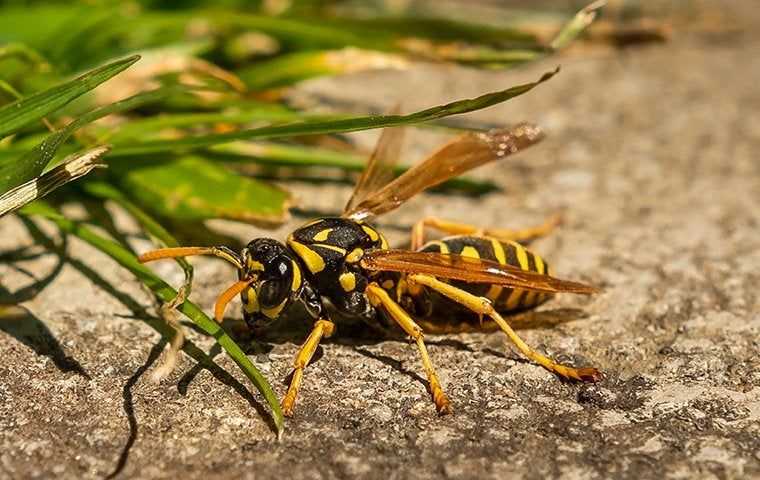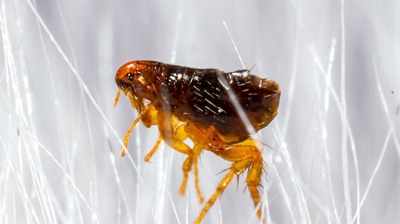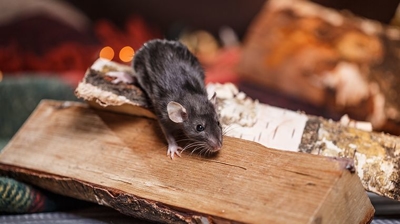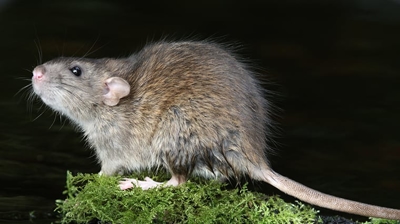
Stinging Insect Identification & Prevention
What are stinging insects?
People widely misunderstand stinging insects, making them more dangerous than they actually are. As the title suggests, stinging insects have a stinger, which they use to defend themselves against predators. You are likely familiar with these common stinging insects:
- Wasps are insects with a narrow-waists that create nests out of wood chewed into a pulp. While they do consume nectar, wasps are also predators.
- Bees are similar to wasps but have a fuller body and a hairy appearance. Bees create their nests out of wax.
- Hornets are social wasps that look similar to yellow jackets.
- Yellow jackets are social wasps commonly misidentified as bees.
Utilize a professional home pest control provider such as SureShot Pest Control to assist with all your stinging insect control needs.
Are stinging insects dangerous?
Although stinging insects are considered dangerous, there are many variables to consider with these pests.
- Social stinging insect species are more dangerous than solitary species because they must protect the colony.
- Some species are more aggressive than others.
- Honeybees can only sting once because of their barbed stinger, but all other species can sting multiple times with their smooth stingers.
- Some people are allergic to the venom of these pests and will suffer more severe reactions.
- Children and animals can have worse reactions to stings.
- A person's reaction can make them more aggressive because swatting and waving your arms is a threat to them.
So while even though we are used to believing these pests are dangerous, they will usually leave you alone if you leave them alone. In general, it is a good rule of thumb to avoid these pests. Even if you believe their nest is empty, it is best not to try and knock it down, hit it, or spray it without professional help.

What Makes Us Different?
-
Veteran Owned & OperatedProudly serving with honor, expertise, and dedicated to quality.
-
Over 151 Businesses ServicedSureShot Pest Control is proud to be a catalyst of change for hundreds of local businesses in Michigan.
-
1,500 Happy Customers & Counting!We are proud to maintain an A+ rating from the Better Business Bureau and bring the best to our clients.
-
30+ Years Of Combined ExperienceWe have spent a quarter-century in the pest control industry, and we have no intention of stopping now!
How can I prevent stinging insects in the future?
The best way to protect yourself against stinging insects is by eliminating the factors that make your property conducive for them. You can do this by removing water sources, maintaining your yard, filling in ground holes, and reducing and flowering plants. You should also make sure there are no cracks in the exterior walls of your home to prevent these pests from building nests inside the walls.
If you see stinging insect nests starting to form or have other issues with these pests, contact us at SureShot Pest Control.


Hear From Our Happy Customers
At SureShot Pest Control, your satisfaction is our priority! See for yourself what our customers have to say about working with us.
-
"I love Christian!"
He is such a friendly guy! He acts like he is not in a hurry, and has all the time in the world to answer my questions. I really appreciate that!
James G. -
"No More Bugs!"
I would call them again in a heartbeat. Stink bugs may be new to us but SureShot has figured out how to get rid of them.
Beth B. -
"Highly recommend"
SureShot has always done a great job of clearing our property of hornets. On the years that we didn't actually find a nest or evidence of a hornet problem, we had them do preventative work.
Georgia E. -
"Always Make Everything Easy for Me"
I've been with Sureshot for many years. They have been consistent and responsive to my needs and requests.
Donald M. -
"Thanks again!"
Sureshot has wonderful service and are always professional. They have done a great job both inside and outside my home.
Darlene M. -
"I would recommend them every time!"
I have used SureShot for annual yard spraying to keep mosquitos away and it works great and the pricing is much more affordable than others in the area.
Kristina M. -
"A Loyal Customer"
I liked the suggestions that Christian had for the mice in the garage. He was very informative. Have used SureShot for over 20 years.
Irene E. -
"Reliable, dependable, friendly & helpful."
No bugs or mice in our home since using SureShot Pest Control for over 4 years. We highly recommend their service!!!
Bonnie D.
Stay In The Know
-
 Signs of a Rodent InfestationRead More
Signs of a Rodent InfestationRead More -
 Tackling Flea Infestations Head-On In GreenvilleRead More
Tackling Flea Infestations Head-On In GreenvilleRead More -
 Start The Year Off Right: Winter Pest Prevention Tips For Greenville ResidentsRead More
Start The Year Off Right: Winter Pest Prevention Tips For Greenville ResidentsRead More -
 Greenville's Guide To Wildlife ControlRead More
Greenville's Guide To Wildlife ControlRead More -
 Keeping Rodents Out: Expert Control Strategies For Greenville PropertiesRead More
Keeping Rodents Out: Expert Control Strategies For Greenville PropertiesRead More -
 How To Get Rid Of Cockroaches: A Comprehensive Guide For Greenville HomeownersRead More
How To Get Rid Of Cockroaches: A Comprehensive Guide For Greenville HomeownersRead More -
 Rodent Control 101: Essential Tips For Keeping Your Greenville Property Rodent-FreeRead More
Rodent Control 101: Essential Tips For Keeping Your Greenville Property Rodent-FreeRead More -
 Eliminating Bed Bugs: Strategies For Effective Bed Bug Control For Your Home In GreenvilleRead More
Eliminating Bed Bugs: Strategies For Effective Bed Bug Control For Your Home In GreenvilleRead More


.2403141246092.png)










